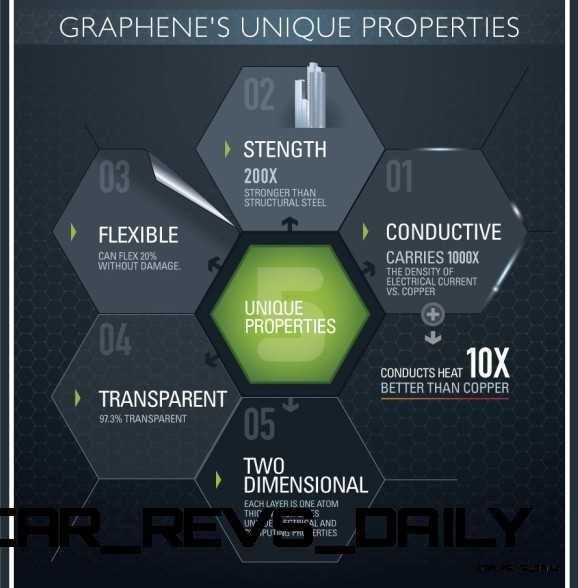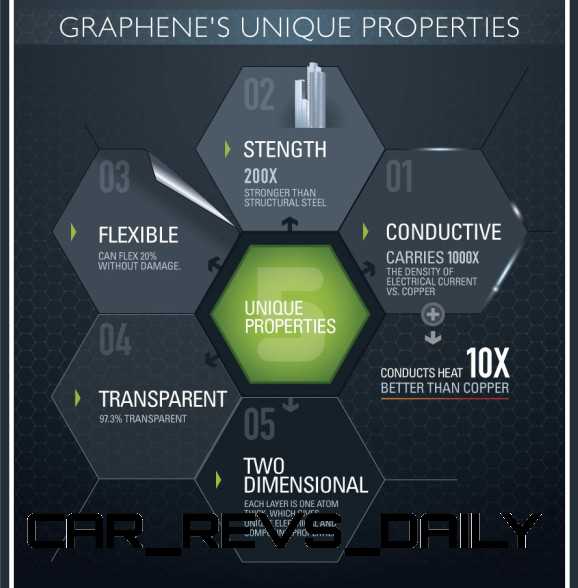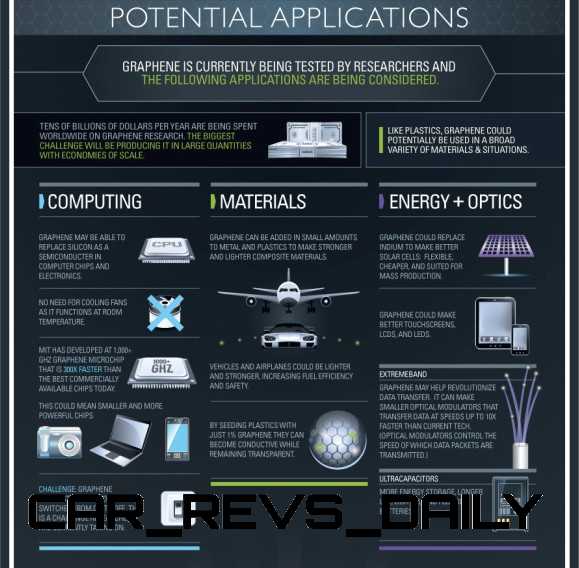Graphene is new on the scene but exploding with promise. It makes carbon-fiber look like a wool sweater from the 1800s. Graphene is two-dimensional sheet of honeycomb lattice molecules just one atom thick, but stronger than any other substance on earth.
As a sheet, it’s carbon.
As a stack, the material is graphite.
The applications are tantalizingly endless, as the material is super-lightweight and even has conductive properties to relay electricity better like a circuitboard.
In the car world, the 2D sheets will be layered and stacked to create 3D panels that are customizable in strength as needed. Future applications for cars will be the complete tub unibody.
Engineered in the 2000s versus the 1950s for carbon-fiber, graphene creators won a Nobel Prize in 2010 to mark the importance of their achievement. No automaker has yet included graphene, not even McLaren, Ferrari or Pagani.
Graphene is currently an exotic prototype, but will see consumer hands within three years in the military and consumer technology sectors.
The promise of the material is that it uses man-made carbon atoms, enabling it to literally be printed and produced in the tens of millions of square feet necessary to a big project. Printing the material avoids the costly and labor-intensive carbon fiber weaving, baking and curing processes that make carbon fiber prohibitively expensive versus steel or aluminum.
Carbo-tanium is CF’s stronger cousin with ribbons of titanium weaved into its structure.
It almost takes a chemist to almost read Graphene’s Wikipedia page, but the invention sounds just perfect for safer and cleaner cars in the near future.
Infographic credit: VisualCapitalist

Tom Burkart is the founder and managing editor of Car-Revs-Daily.com, an innovative and rapidly-expanding automotive news magazine.
He holds a Journalism JBA degree from the University of Wisconsin – Madison. Tom currently resides in Charleston, South Carolina with his two amazing dogs, Drake and Tank.
Mr. Burkart is available for all questions and concerns by email Tom(at)car-revs-daily.com.




